
Fanø: Denmark's Hidden Coastal Gem
Discover Fanø, Denmark's hidden coastal gem, offering stunning beaches, charming villages, and rich wildlife, perfect for a tranquil getaway and nature adventures.
Fanø, an island off the west coast of Denmark, is a dream destination for nature lovers and those seeking a peaceful retreat. Known for its wide sandy beaches, charming villages, and rich wildlife, Fanø offers a unique blend of relaxation and adventure. One of the island’s main attractions is its spectacular beaches, which stretch for miles and are perfect for long walks, kite flying, and even seal watching. The island is also a paradise for bird watchers, with a wide variety of species that can be observed in their natural habitat. The quaint villages of Nordby and Sønderho are must-visits, offering a glimpse into traditional Danish life. The picturesque houses, narrow streets, and local museums provide a charming backdrop for a leisurely stroll. Don’t miss the opportunity to try local delicacies in the cozy cafes and restaurants scattered around the island. For those interested in history and culture, Fanø is home to several interesting sites, including the Fanø Maritime Museum and the Sønderho Mill. Additionally, the island hosts various festivals throughout the year, such as the famous Fanø International Kite Festival, which draws visitors from all over the world.
Local tips in Fanø
- Rent a bike to explore the island’s scenic routes and hidden spots.
- Visit during the Fanø International Kite Festival for a unique experience.
- Try local dishes like smoked fish and Danish pastries at the island's eateries.
- Bring binoculars for bird watching and seal spotting along the coast.
- Check the ferry schedule in advance, as it is the main way to reach the island.
Fanø: Denmark's Hidden Coastal Gem
Fanø, an island off the west coast of Denmark, is a dream destination for nature lovers and those seeking a peaceful retreat. Known for its wide sandy beaches, charming villages, and rich wildlife, Fanø offers a unique blend of relaxation and adventure. One of the island’s main attractions is its spectacular beaches, which stretch for miles and are perfect for long walks, kite flying, and even seal watching. The island is also a paradise for bird watchers, with a wide variety of species that can be observed in their natural habitat. The quaint villages of Nordby and Sønderho are must-visits, offering a glimpse into traditional Danish life. The picturesque houses, narrow streets, and local museums provide a charming backdrop for a leisurely stroll. Don’t miss the opportunity to try local delicacies in the cozy cafes and restaurants scattered around the island. For those interested in history and culture, Fanø is home to several interesting sites, including the Fanø Maritime Museum and the Sønderho Mill. Additionally, the island hosts various festivals throughout the year, such as the famous Fanø International Kite Festival, which draws visitors from all over the world.
When is the best time to go to Fanø?
Iconic landmarks you can’t miss
Wadden Sea National Park
Denmark’s largest national park, Wadden Sea is a UNESCO-listed coastal wilderness on Fanø, renowned for vast tidal flats, rare wildlife, and unforgettable migratory bird displays.

Men by the Sea
Experience the awe-inspiring Men by the Sea in Esbjerg—a monumental coastal sculpture, blending art, history, and breathtaking North Sea vistas.

Fanø Krogaard
Experience the timeless charm of Fanø Krogaard, a historic inn blending Nordic cuisine, island tradition, and warm hospitality in the heart of Nordby harbour.

Sønderho Mølle
Experience island heritage at Sønderho Mølle, Fanø’s iconic 19th-century windmill—a beloved landmark offering sweeping views, cultural history, and photogenic charm.

Danland Fanø
Family-friendly seaside holiday resort nestled among Fanø's dunes, offering direct access to wide beaches, indoor pools, wellness options, and the spirit of Danish island living.

Rindby beach
Expansive sandy shores, coastal adventures, and authentic Danish holiday spirit—experience Rindby Beach, Fanø’s iconic North Sea escape with space for all.

The Beach on Fanø
Vast, iconic North Sea beach spanning Fanø’s coastline, famed for its wild dunes, kite festivals, wide sands, and unique Danish maritime character.

Pælebjerg - Det højeste punkt på Fanø
Pælebjerg is Fanø’s highest natural point, offering sweeping views across the island’s dunes, heathlands, and coastline from its historic, windswept summit.

Sønderho Church
A historic 18th-century Lutheran church in Sønderho, renowned for its maritime heritage, delicate model ships, striking altar, and tranquil island atmosphere.
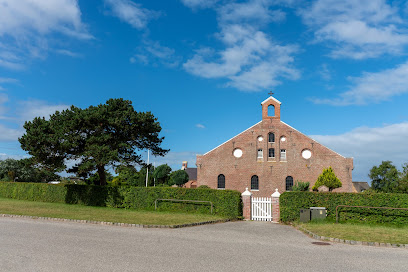
Fanø Kunstmuseum
Discover Fanø Kunstmuseum, where local landscapes, maritime heritage, and the island’s creative legacy come alive through evocative art and engaging exhibitions.

Fanø Tourist Office
Centrally located on Fanø, the Tourist Office is the ideal starting point for discovering authentic island charm, local culture, and practical travel advice.

Bunkers on Fanø
Explore Fanø’s atmospheric WWII bunkers—historic fortifications nestled in windswept dunes, offering a unique blend of war history and stunning North Sea scenery.
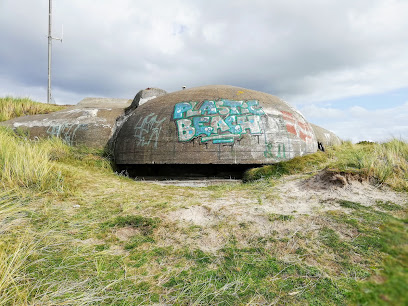
Sønderho Gl. Fuglekøje
Step into history at Sønderho Gl. Fuglekøje, Fanø’s authentic duck decoy, where Danish coastal tradition, wildlife, and island heritage come to life in tranquil heathland.
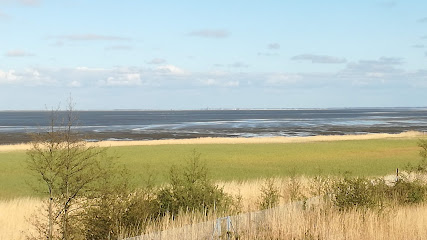
FanøFærgen, Esbjerg
Essential ferry link connecting Esbjerg and Fanø, ushering travelers from Denmark’s mainland to the UNESCO World Heritage landscapes of the Wadden Sea.

Hannes Hus
Experience authentic 19th-century island life at Hannes Hus, a perfectly preserved seafarer’s home and local heritage museum in the heart of Sønderho, Fanø.

Unmissable attractions to see
Skovlegeplads
Experience Fanø’s living duck decoy of Sønderho—an immersive blend of maritime nature, authentic Danish history, and peaceful woodland trails bordering the Wadden Sea.

Sønderho Mølle
Historic open-air duck decoy in Fanø’s dunes, blending unique birdlife heritage with island traditions and immersive outdoor exhibits for curious visitors.

Rindby beach
Step into a living fragment of Danish heritage at Sønderho Gl. Fuglekøje, Fanø’s fascinating 19th-century duck decoy site, preserved amid tranquil coastal woodland.

Fanoe Bad Beach
Step into Fanø’s past at Sønderho Gl. Fuglekøje—a rare Danish duck decoy, where ingenious waterfowl trapping meets serene island tradition and nature.

Seal Bank Walk Meeting Point
Gateway to the wild seal colonies of Fanø, offering unforgettable tidal walks and up-close wildlife encounters amid the coastal splendor of Denmark’s Wadden Sea.

Fanø Skibsfarts- & Dragtsamling
Stroll along Denmark’s most charming village street, flanked by grand thatched homes and linden trees, on the path to enchanting Schackenborg Castle in Møgeltønder.

Pælebjerg - Det højeste punkt på Fanø
Discover Sønderho Gl. Fuglekøje, a rare historic duck decoy nestled in Fanø’s serene woods, revealing Denmark’s unique wildlife traditions and rural heritage.

Kikkebjerget
Slotsgaden in Møgeltønder: A fairytale street of thatched cottages, noble vistas, and rural calm leading to the historic Schackenborg Castle in southern Denmark.

Fanø Kunstmuseum
Wander beneath linden trees and past centuries-old cottages along Møgeltønder’s Slotsgaden, Denmark’s most enchanting heritage street leading to Schackenborg Castle.

Sønderho Gl. Fuglekøje
Step into Fanø’s bygone era of waterfowl trapping at Sønderho Gl. Fuglekøje, an atmospheric woodland museum blending local heritage and nature on Denmark’s west coast.

Fanø Museum
Immerse yourself in Denmark’s most beautiful street, where thatched cottages and blooming gardens lead to the historic gates of Schackenborg Castle in peaceful Møgeltønder.

Stormflodssøjlen, Sønderho
Experience North Sea wildlife at the Seal Bank Walk Meeting Point on Fanø, where tidal flats, seals, and expansive vistas shape an unforgettable Wadden Sea visit.

Fanø Vesterland Festival
Step into the historic world of duck decoy trapping at Sønderho Gl. Fuglekøje, where Fanø’s coastal landscape and folk ingenuity come vividly to life.

Nördlich Odden (Let flakbatteri)
Step into Fanø’s wildfowling history at Sønderho Gl. Fuglekøje, an atmospheric 19th-century duck decoy nestled in tranquil woodlands by the North Sea.

Strandgut - Strandfischerei Monument
Explore Denmark's most picturesque village street, Slotsgaden in Møgeltønder, featuring historic 18th-century houses, cobblestone paths, and Schackenborg Castle.

Essential places to dine
Stoppestedet I/S
Family-friendly fast food with a beachy vibe, Stoppestedet I/S serves classic burgers and comfort fare just steps from Fanø’s iconic dunes and coastline.

Fanø Krogaard
Historic harborside inn blending Fanø’s maritime legacy, Nordic cuisine, and warm hospitality at the gateway to Denmark’s wild Wadden Sea islands.
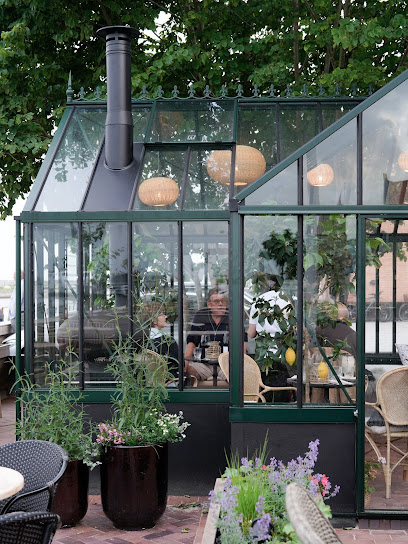
Pandekagehuset Fanø
Enjoy authentic Danish pancakes and island hospitality at Pandekagehuset Fanø, a cozy lunch spot in Nordby that’s beloved by locals and travelers alike.

Fanø Bryghus
Fanø Bryghus is the island’s thriving craft brewery, known for creative beers, community spirit, and authentic experiences inspired by Denmark’s windswept west coast.

Rudbecks Fanø
Experience Fanø’s authentic flavors and warm hospitality at Rudbecks—a beloved café, deli, and wine bar nestled in the heart of the island's vibrant main village.

Sønderho Kro
Experience Danish heritage and culinary excellence at Sønderho Kro, a historic inn with gourmet dining set in the atmospheric heart of Fanø’s most charming village.

Tre Søstre
Atmospheric café in Nordby village serving Danish classics, home-baked cakes, and island hospitality—a cherished Fanø gathering spot for locals and visitors alike.

LIGHTHOUSE BURGERS
Savor gourmet burgers made from local ingredients at Lighthouse Burgers on the beautiful island of Fanø.

Restaurant Dino
A coastal favorite on Fanø Island, Restaurant Dino pairs creative, Nordic-inspired cuisine with panoramic North Sea views and a relaxed, welcoming atmosphere.

Restaurant Aroma - Fanø øko Øl
Restaurant Aroma on Fanø combines organic craft beers brewed in-house with creative Danish cuisine, set amidst the island's charming, laidback coastal atmosphere.

Kellers Badehotel
Historic beachfront hotel on Fanø combining coastal Danish charm, gourmet dining, and immersive island hospitality with sweeping North Sea views and a storied heritage.
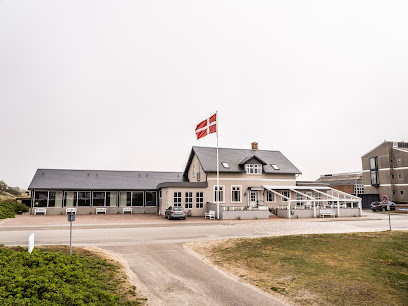
Restaurant/Café Fajancen
Historic brasserie in Nordby offering classic Danish cuisine, local seafood, and island ambiance, perfect for savoring fresh flavors and island hospitality on Fanø.

Hotel Fanø Bad
Classic seaside retreat on Fanø's wild west coast, offering warm Nordic hospitality, dune views, and direct access to Denmark’s legendary island beaches.

Cafe Nord
Discover the flavors of Denmark at Cafe Nord on Fanø Island – where delicious cuisine meets charming coastal ambiance.

Jimmy's Køkken
Savor generous pizzas and familiar fare at the heart of Fanø, where Jimmy’s Køkken blends island hospitality with crowd-pleasing Italian flavors.

Local Phrases about Fanø
-
- HelloHej
[hey] - GoodbyeFarvel
[far-vel] - YesJa
[ya] - NoNej
[nay] - Please/You're welcomeVær så god
[vehr so goh] - Thank youTak
[tahk] - Excuse me/SorryUndskyld
[oon-skil] - How are you?Hvordan har du det?
[vohr-dan har doo deh] - Fine. And you?Godt. Og du?
[got. oh doo] - Do you speak English?Taler du engelsk?
[tah-ler doo eng-elsk] - I don't understandJeg forstår ikke
[yay for-stor eek-eh]
- HelloHej
-
- I'd like to see the menu, pleaseJeg vil gerne se menuen, tak
[yay vil gehr-neh se meh-noo-en tahk] - I don't eat meatJeg spiser ikke kød
[yay spee-ser ee-keh kuhd] - Cheers!Skål!
[skawl] - I would like to pay, pleaseJeg vil gerne betale, tak
[yay vil gehr-neh beh-tah-leh tahk]
- I'd like to see the menu, pleaseJeg vil gerne se menuen, tak
-
- Help!Hjælp!
[hyelp] - Go away!Gå væk!
[goh vehk] - Call the Police!Ring til politiet!
[reen tee poh-lee-tee-eh] - Call a doctor!Ring til en læge!
[reen tee en lay-eh] - I'm lostJeg er faret vild
[yay ehr fah-ret veeld] - I'm illJeg er syg
[yay ehr soog]
- Help!Hjælp!
-
- I'd like to buy...Jeg vil gerne købe...
[yay vil gehr-neh kuh-beh] - I'm just lookingJeg kigger bare
[yay kee-geh bahr-eh] - How much is it?Hvor meget koster det?
[vohr meh-eh koh-stehr deh] - That's too expensiveDet er for dyrt
[deh ehr for deer-t] - Can you lower the price?Kan du sænke prisen?
[kahn doo sahn-keh pree-sehn]
- I'd like to buy...Jeg vil gerne købe...
-
- What time is it?Hvad er klokken?
[vah eh kloh-ken] - It's one o'clockDen er et
[dehn ehr et] - Half past (10)Halv ti
[halv tee] - MorningMorgen
[moh-ren] - AfternoonEftermiddag
[ef-ter-mee-dag] - EveningAften
[ahf-tehn] - YesterdayI går
[ee gohr] - TodayI dag
[ee dah] - TomorrowI morgen
[ee moh-ren] - 1En
[en] - 2To
[toh] - 3Tre
[treh] - 4Fire
[fee-reh] - 5Fem
[fem] - 6Seks
[seks] - 7Syv
[siv] - 8Otte
[oh-teh] - 9Ni
[nee] - 10Ti
[tee]
- What time is it?Hvad er klokken?
-
- Where's a/the...?Hvor er en/et...?
[vohr ehr en/et] - What's the address?Hvad er adressen?
[vah eh ah-dres-sehn] - Can you show me (on the map)?Kan du vise mig (på kortet)?
[kahn doo vee-seh meeh (poh kort-eh)] - When's the next (bus)?Hvornår er næste (bus)?
[vohr-nor ehr nes-teh (boos)] - A ticket (to ....)Et billet (til ....)
[et bee-leht (teel)]
- Where's a/the...?Hvor er en/et...?
History of Fanø
-
Fanø's history dates back to the Viking Age, around the 9th century. Archaeological findings suggest that the island was used as a base for Viking explorers and traders. Its strategic location in the North Sea made it an ideal spot for launching maritime expeditions. The island's name is derived from the Old Norse word 'Fani,' meaning 'a place with sandy soil,' which is reflective of its landscape.
-
During the medieval period, Fanø became known for its thriving fishing industry. The island's inhabitants relied heavily on the bounty of the sea, with herring being a particularly important catch. Fanø's maritime trade also flourished, and the island became a hub for shipping routes between Denmark, Norway, and the British Isles. This era saw the development of various ports and the construction of traditional Fanø houses, which were built to withstand the harsh coastal weather.
-
The 18th century marked the peak of Fanø's whaling industry. Local sailors ventured as far as the Arctic to hunt whales, bringing prosperity to the island. This period saw the construction of grand captain's houses, adorned with intricate woodwork and maritime motifs, which still stand today as a testament to the island's seafaring heritage. The wealth generated from whaling also led to the establishment of several cultural institutions, including the Fanø Maritime Museum.
-
Fanø's strategic importance was highlighted during the Napoleonic Wars in the early 19th century. The island was fortified to protect against potential British naval attacks. Remnants of these fortifications, including earthworks and gun placements, can still be seen today. The island's involvement in the conflict had a lasting impact on its community, with many locals participating in the defense efforts.
-
By the late 19th and early 20th centuries, Fanø began to attract tourists, drawn by its picturesque landscapes and sandy beaches. The establishment of the first tourist hotels and summerhouses transformed the island into a popular holiday destination. The Fanø International Kite Festival, initiated in 1985, further boosted the island's appeal, drawing kite enthusiasts from around the world. Today, tourism remains a vital part of Fanø's economy.
-
During World War II, Fanø was occupied by German forces, who constructed bunkers and other military installations as part of the Atlantic Wall defense system. The island's strategic location made it a key point in the German defense strategy. Many of these wartime structures still exist and are accessible to visitors, offering a glimpse into Fanø's wartime history. The occupation had a profound effect on the local population, shaping the island's post-war recovery and community spirit.
-
In recent decades, Fanø has made significant efforts to preserve its cultural heritage. The island's historic buildings, maritime traditions, and unique dialect are actively protected and promoted. Initiatives such as the Fanø Art Museum and the annual Fanø International Kite Festival celebrate the island's rich history and vibrant culture. These efforts ensure that Fanø's heritage remains an integral part of its identity, attracting visitors who seek to experience its unique blend of history and tradition.
Fanø Essentials
-
Fanø is an island located off the west coast of Denmark in the Wadden Sea. The most common way to reach Fanø is by taking a ferry from the town of Esbjerg on the mainland. The ferry ride takes about 12 minutes and operates frequently throughout the day. Esbjerg is well-connected by train and road, with regular services from major cities like Copenhagen and Aarhus. If you are flying, the nearest major airport is Billund Airport, around 60 kilometers from Esbjerg. From Billund, you can take a bus or taxi to Esbjerg.
-
Once on Fanø, transportation is straightforward. The island is small, and many attractions are accessible by foot or bicycle. Bicycles can be rented from various rental shops on the island. For longer distances, there is a local bus service that connects the main villages of Nordby and Sønderho. Taxis are also available but are less common. Renting a car is an option, but it's generally not necessary due to the island's compact size.
-
The official currency in Denmark is the Danish Krone (DKK). Credit and debit cards are widely accepted on Fanø, including in restaurants, hotels, and shops. However, it's a good idea to carry some cash for smaller establishments or market purchases. ATMs are available in Nordby and Sønderho, where you can withdraw Danish Kroner using international bank cards.
-
Fanø is generally a very safe destination for tourists, with low crime rates. There are no specific areas or neighborhoods with high crime rates targeting tourists. Standard safety precautions should be taken, such as not leaving valuables unattended and being aware of your surroundings, especially in crowded places. The island is family-friendly and well-suited for solo travelers as well.
-
In case of emergency, you can dial 112 for immediate assistance. This number connects you to emergency services, including police, fire, and medical assistance. Fanø has a medical clinic in Nordby and a pharmacy for minor health issues. For more serious medical emergencies, the nearest hospital is in Esbjerg on the mainland. It's advisable to have travel insurance that covers medical emergencies.
-
Fashion: Do dress comfortably and appropriately for outdoor activities. Layers are recommended due to the island's variable weather. Religion: Do respect local customs if visiting churches or religious sites. Public Transport: Do be courteous and give up your seat to elderly passengers on the bus. Don’t eat or drink on public transport. Greetings: Do greet people with a friendly 'Hej' (Hello). A handshake is also common. Eating & Drinking: Do try local seafood delicacies and traditional Danish dishes. Don’t refuse hospitality, as it is considered impolite.
-
To experience Fanø like a local, rent a bicycle and explore the island's scenic routes. Visit the local markets, especially during the summer months, to buy fresh produce and artisanal goods. Engage with local residents, who are often happy to share stories about the island's history and culture. Don't miss the annual Fanø International Kite Festival, which attracts kite enthusiasts from around the world. For a unique experience, take a guided seal safari tour to observe the local seal population.
Trending Landmarks in Fanø
Nearby Cities to Fanø
-
Things To Do in Ribe
-
Things To Do in Kolding
-
Things To Do in Vejle
-
Things To Do in Herning
-
Things To Do in Horsens
-
Things To Do in Sønderborg
-
Things To Do in Silkeborg
-
Things To Do in Odense
-
Things To Do in Viborg
-
Things To Do in Aarhus
-
Things To Do in Nyborg
-
Things To Do in Randers
-
Things To Do in Kalundborg
-
Things To Do in Slagelse
-
Things To Do in Aalborg








